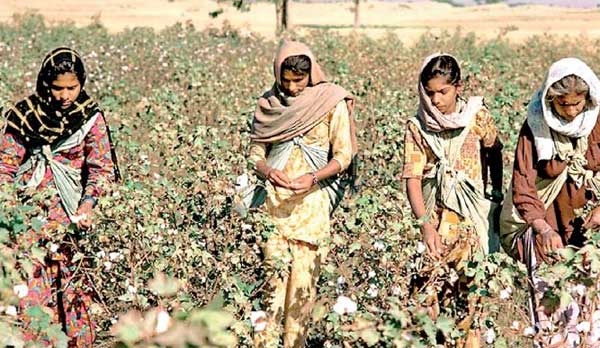 In a recent study done by Frances Moore and Delavane Diaz of Stanford University which focuses on climate ‘damage functions’ point to stronger impacts on the world’s poor that will be caused by climate change, than predicted before.
In a recent study done by Frances Moore and Delavane Diaz of Stanford University which focuses on climate ‘damage functions’ point to stronger impacts on the world’s poor that will be caused by climate change, than predicted before.
In a world divided as rich and poor, the study provides that while rich economies will grow well in a warmer world, the economies of the poorer countries would be significantly impacted.

Economic impacts of climate change
The study “Temperature Impacts on Economic Growth Warrant Stringent Mitigation Policy” states that “damage from climate change that directly affect growth rates have the potential to markedly increase the social cost of carbon because each temperature shock has a persistent that permanently lowers GDP.”
It adds that, “Continued warming therefore has a compounding effect over time, so that even very small growth effects result in much larger impacts than the traditional damage formulation.”
The study also provides that in a world impacted by climate change, “The average annual growth rate in poor regions is cut from 3.2 percent to 2.6 percent, which means that by 2100 per-capita GDP is 40 percent below reference.”
The poorer countries already sensitive to climate impacts due to their vulnerability will have more impact on their economies as the temperature increases. This is reinforced due to the impacts it would have on agriculture.
“Higher temperatures may be more damaging in poor countries because their economies are reliant on climateexposed sectors such as agriculture and natural resource extraction, or because risk management options such as insurance or air conditioning are not as widely available. In this case we would expect the sensitivity of poor regions to warming to decrease as per-capita GDP increases,” explains the study.
Limiting global temperature increase
While climate negotiations focus around achieving the global level of temperature increase to below2° C , the Small Island States and the least developed countries call for a target of 1.5 °C. And the call for the lower level is justified through the study which points out that there is a need to aim for lesser than 2°C.
Predictions for t he economically optimal pathway points to an increase in a global surface warming around 3-3.5°C which would risk the survival of many vulnerable states, and its communities.
Moore and Diaz’s study finds that if climate change does affect GDP growth, then the best path to be adopted is to limit temperatures to between 1.6 and 2.8°C warming in 2100, with a best estimate of around 1.7°C warming.
Impacts on South Asian economies
The South Asian region is the home for communities that are most vulnerable to climate change impacts. Countries such as Bangladesh, Nepal while being among the least developed countries on the economic scale are also among the most vulnerable to the impacts of climate change with frequent floods and glacier melts.
As a small island state, Maldives is also among the most vulnerable communities in the world which are at the threat of losing their homes due to sea level rise caused by climate change. While the economies of Sri Lanka, Pakistan and India will also be impacted due to impacts on agriculture, on which the country’s food security depends.
World Bank data provides that South Asia remains the home to the most number of people living in poverty. According to the World Bank’s most recent poverty estimates,“about 571 million people in the region survive on less than $1.25 a day, and they make up more than 44 percent of the developing world’s poor.”
While South Asia has an important role to play in global economic development, with the world’s largest working-age population, a quarter of the world’s middle-class consumers, the largest number of poor and undernourished in the worldwill have a key impact on its capacity. Further, as the impacts of climate change are predicted to create impacts stronger than predicted previously, there is a need to take into account such impacts and move towards a low carbon economic path if the region is to move towards economic growth prioritising on inclusive growth for the region.

